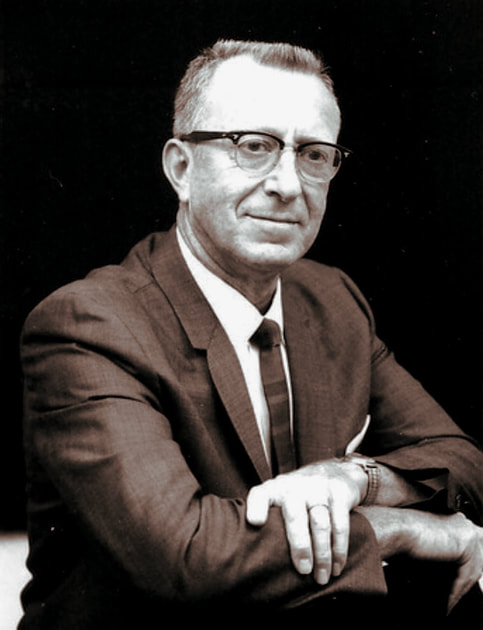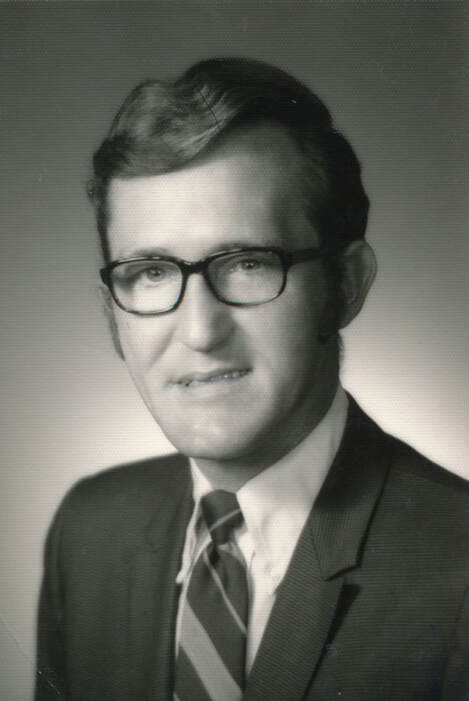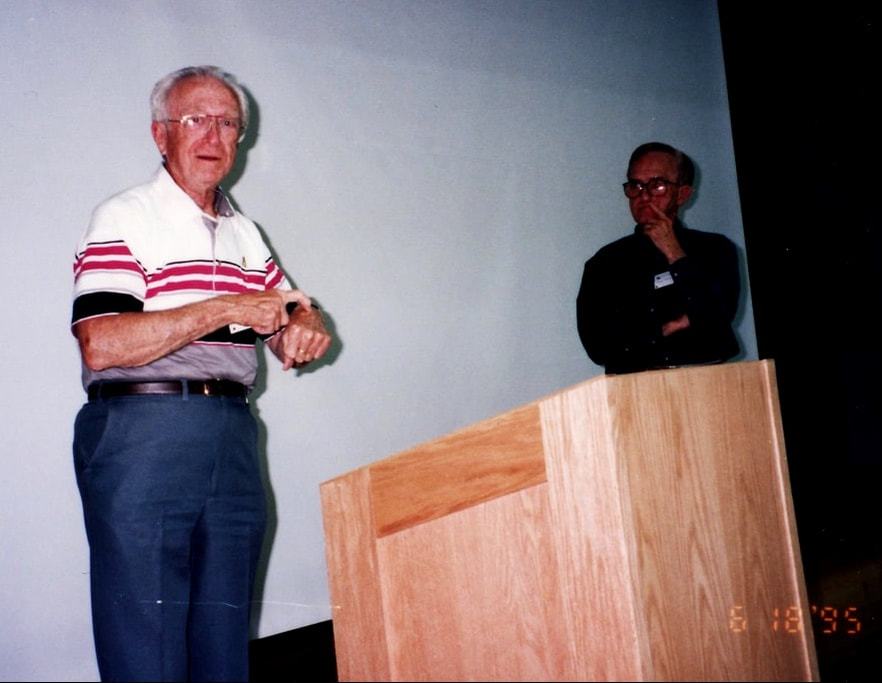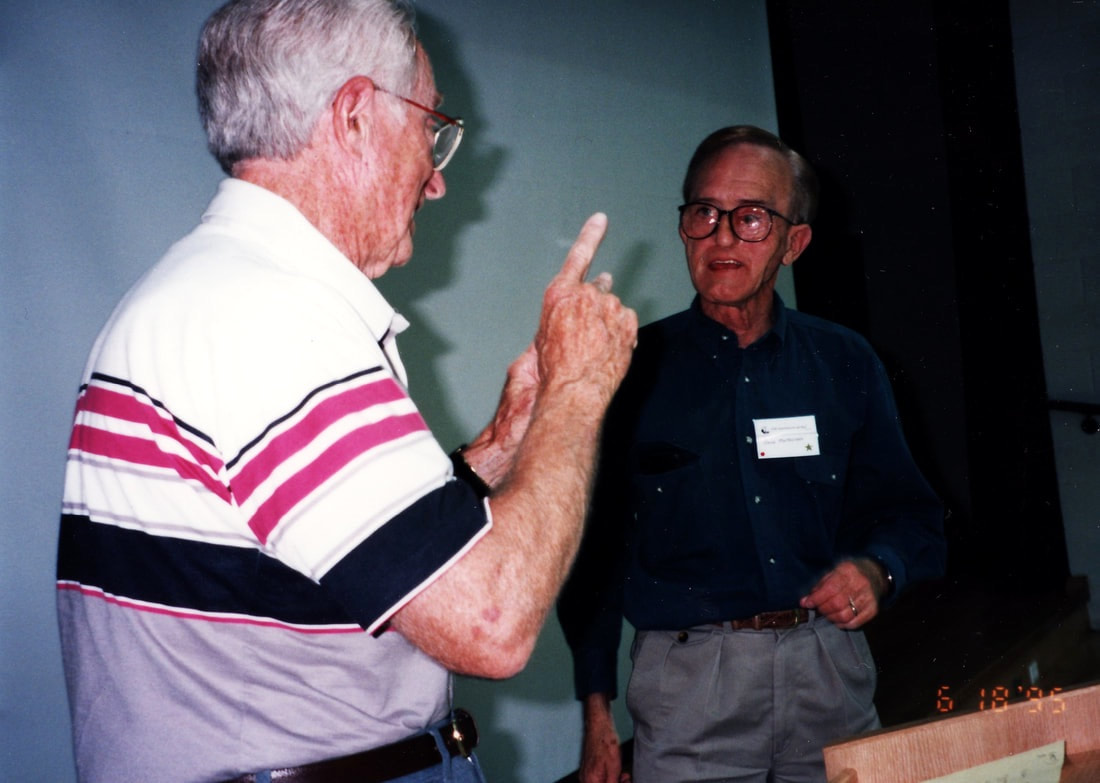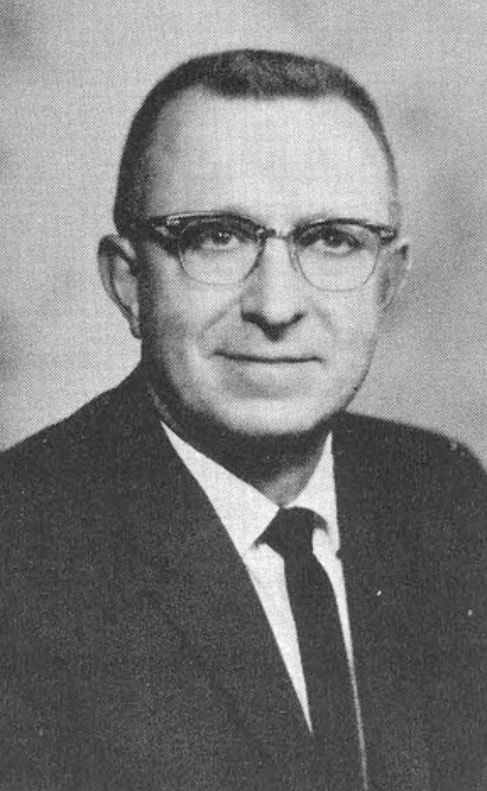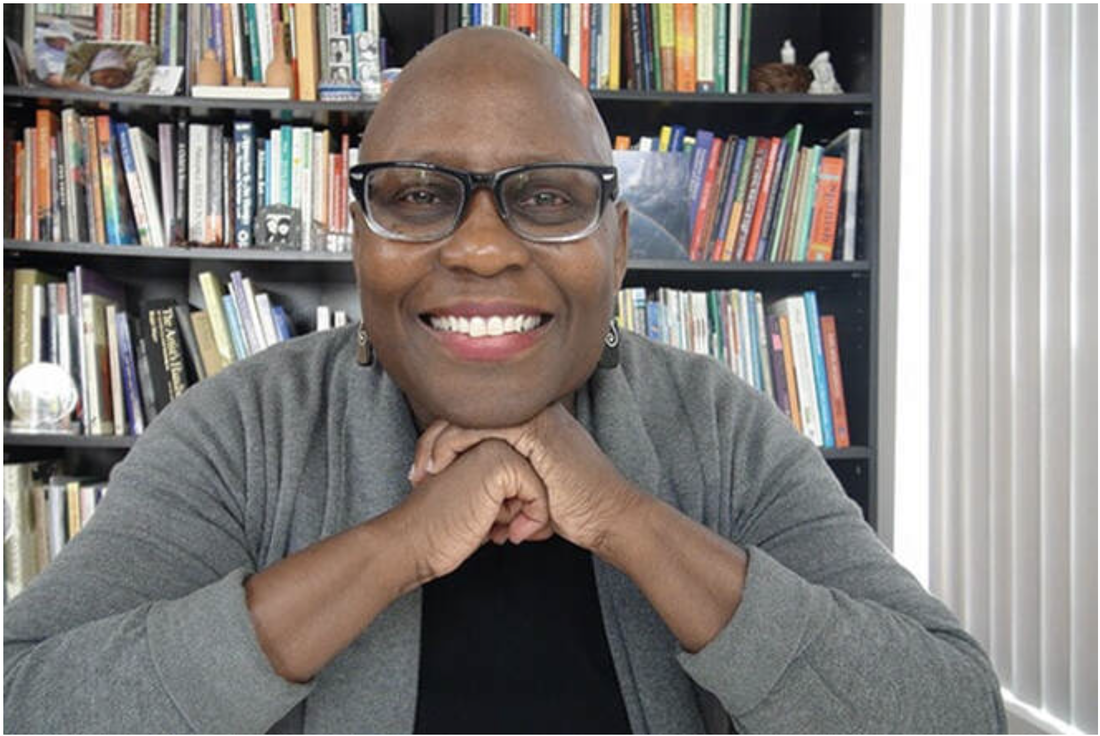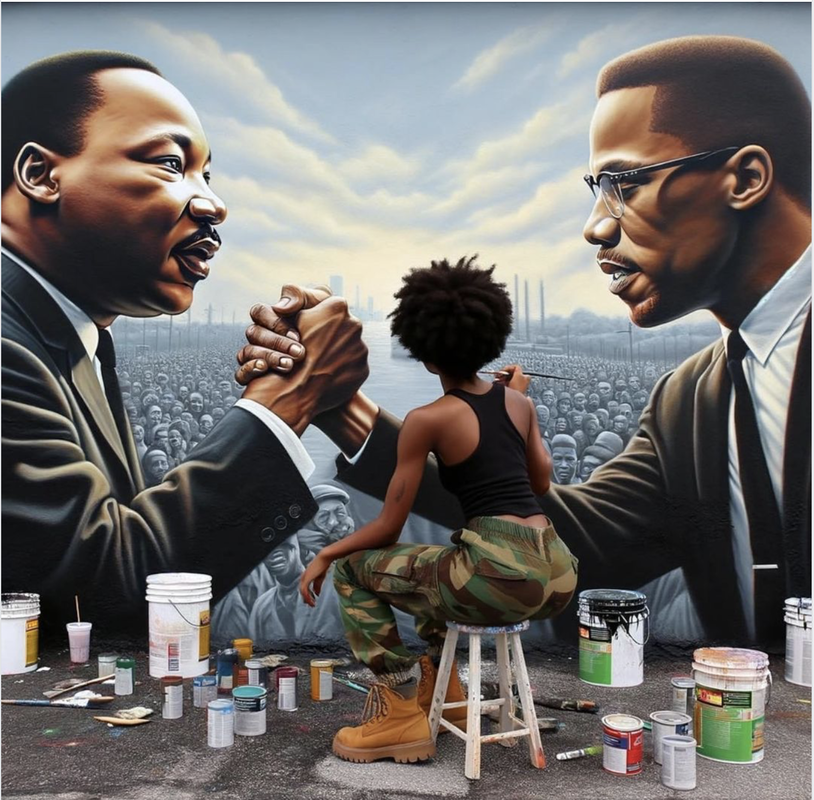Utah's Connection
in Black Deaf History
Written by Jodi Becker Kinner
Published in 2020
Updated in 2024
Published in 2020
Updated in 2024
Author’s Note
I have a strong interest in Black History due to my relationship with a Black guy during high school. This interest often leads me to reflect on the roles of two prominent figures in the Utah Deaf community, Dr. Robert G. Sanderson, also known as Sandie, and Bob and W. David Mortensen, also known as Dave, while writing the history website. Like Dr. Martin Luther King Jr. and Malcolm X, they were active leaders in their community. Yet their characteristics and leadership styles are what set them apart. For example, Sandie was akin to MLK with his diplomatic listening skills and willingness to assist others. Malcolm X's fearless advocacy mirrored that of Dave, a political activist known for his ambition and persistence as a Deaf leader. Similarly, Dr. Sanderson and Dr. Martin were well-known for their ability to build bridges, listen empathetically, and educate others on equality issues. Their Ph.D degrees provided them with a platform to express themselves and gain attention.
Dave was an inspiring leader who fearlessly fought for civil and accessible rights for the local Deaf community, much like Malcolm X. His dedication and leadership skills were admirable. On the other hand, Sandie had a different leadership style, but despite their differences, they formed an effective team that efficiently met the needs of the Utah Deaf community. The synergy between Robert Sanderson and Dave Mortensen was a key factor in their success. Dave Mortensen took over where Dr. Sanderson had left off and successfully completed projects he had initiated, such as establishing the Robert G. Sanderson Community Center and passing the legislative bills. Their mutual support and reliance on each other were crucial to their achievements. Dave would not have been able to advocate for the community without Sandie's initial efforts, and he would not have been able to complete his work without Dave's support. Sandie and Dave were relentless in their advocacy, much like Martin Luther King Jr. and Malcolm X, who were known for their unwavering perseverance in their respective communities in fighting and accomplishing civil rights. I have a deep respect and admiration for these individuals and their leadership.
In July 1964, as Dr. Robert G. Sanderson was to be elected president of the National Association of the Deaf, the Civil Rights Act of 1964 was passed, marking a momentous occasion when the NAD granted Deaf women the right to vote. This was a significant step in promoting inclusivity and equality within the NAD. After the Voting Rights Act of 1965 was passed, the National Association of the Deaf allowed Black Deaf people to join and vote in the NAD in 1965, further enhancing this commitment (UAD History). Prior to 1965, the National Association of the Deaf did not give female members the right to vote, nor did it give Black individuals any right to membership (2012 Conference Resolutions). These changes were an important milestone in creating a more inclusive community for all Deaf individuals, regardless of ethnicity, gender, or sexual orientation. The new change also marked a historic turning point in the NAD's history, signifying a shift towards inclusivity and equality. It also highlighted the unity and collaboration within the National Association of the Deaf, a testament to the collective effort of its members and their shared vision of a more inclusive future. This shared vision makes us all feel hopeful and optimistic about the future of this community.
Since its establishment in 1880, the National Association of the Deaf has been a steadfast advocate for the rights of Deaf people. However, it was not until 1965 that Black Deaf individuals were granted the right to become members and vote. The prevailing racial discrimination at the time had barred them from joining not only the NAD but also other Deaf organizations and clubs. This historical journey underscores the NAD's unwavering commitment to inclusivity and equality, a commitment that has shaped its mission and values.
Since its establishment in 1880, the National Association of the Deaf has been a steadfast advocate for the rights of Deaf people. However, it was not until 1965 that Black Deaf individuals were granted the right to become members and vote. The prevailing racial discrimination at the time had barred them from joining not only the NAD but also other Deaf organizations and clubs. This historical journey underscores the NAD's unwavering commitment to inclusivity and equality, a commitment that has shaped its mission and values.
Since 1965, the Black Deaf community has shown remarkable perseverance in its efforts to collaborate with the National Association of the Deaf. Despite facing numerous rejections, they continued to push for their rights and needs. The NAD's reluctance to address its challenges and goals and the lack of representation among NAD representatives led the leaders of the Black Deaf community to establish the National Black Deaf Advocate (NBDA) in 1982. This organization was created out of the need for representation and advocacy, and it has grown stronger over time, advocating for the rights and needs of Black Deaf people. The NBDA's role in advocating for the Black Deaf community's rights and needs is crucial, and it continues to be a strong voice for equality and inclusivity. For more detailed information, please visit the NBDA website at www.nbda.org.
Over time, the National Association of the Deaf has made significant strides toward inclusivity and equality. The board of directors now includes Deaf people of color, marking a pivotal moment in the NAD's history. This progress is a testament to the NAD's commitment to inclusivity and equality, giving us hope for a more inclusive future. The NAD's progress toward inclusivity and equality is a beacon of hope, inspiring us to continue our advocacy for a more inclusive society.
Over time, the National Association of the Deaf has made significant strides toward inclusivity and equality. The board of directors now includes Deaf people of color, marking a pivotal moment in the NAD's history. This progress is a testament to the NAD's commitment to inclusivity and equality, giving us hope for a more inclusive future. The NAD's progress toward inclusivity and equality is a beacon of hope, inspiring us to continue our advocacy for a more inclusive society.
In 2012, I served as a delegate and representative for the Utah Association of the Deaf at the NAD Conference. During the event, I had the opportunity to witness a touching moment when Dr. Bobbie Beth Scoggins, president of the National Association of the Deaf, formally apologized to the Black Deaf delegates from the NBDA and NAD for the historical denial of equal rights based on race. This apology was related to the document titled "Denial of Equal Rights to Deaf Women and Black Deaf Individuals" in the 2012 Conference Resolutions, an important document on the NAD website.
In the wake of George Floyd's death in 2020 and the ensuing Black Lives Matter protests, the Black community continues to grapple with the enduring effects of racial injustice. This moment allows us to listen, learn, and grow. In the aftermath of the Black Lives Matter movement, I delved into the inspiring work of Dr. Laurene Simms, a highly esteemed Black Deaf professor at Gallaudet University and a champion for social justice. Dr. Simms, a nationally renowned expert in ASL/English bilingual education, offered bilingual training to the first group of teachers and aides just before the founding of the Jean Massieu School of the Deaf in 1999. Her significant contribution to the movement is truly remarkable and serves as an inspiration to us all. Below is a photo of her conducting a workshop presentation.
In the wake of George Floyd's death in 2020 and the ensuing Black Lives Matter protests, the Black community continues to grapple with the enduring effects of racial injustice. This moment allows us to listen, learn, and grow. In the aftermath of the Black Lives Matter movement, I delved into the inspiring work of Dr. Laurene Simms, a highly esteemed Black Deaf professor at Gallaudet University and a champion for social justice. Dr. Simms, a nationally renowned expert in ASL/English bilingual education, offered bilingual training to the first group of teachers and aides just before the founding of the Jean Massieu School of the Deaf in 1999. Her significant contribution to the movement is truly remarkable and serves as an inspiration to us all. Below is a photo of her conducting a workshop presentation.
In 2018, the Indiana School for the Deaf paid tribute to one of its most outstanding alums, Dr. Simms, by naming its elementary building after her. This act of recognition is a testament to Dr. Simms's invaluable contribution to the Black Deaf community. As a result, the first teachers and aides at the Jean Massieu School of the Deaf had the opportunity to receive training from Dr. Simms. Their knowledge from this training has become a valuable part of the school's history, and we are all grateful for Dr. Simms' work.
During the global Black Lives Matter movement in 2020, I came across an article titled 'Black Deaf Culture Through the Lens of Black Deaf History,' which left a lasting impression on me. This article is a treasure trove of knowledge and an excellent resource for anyone looking to learn about the history and culture of the Black Deaf community. It features biographies, arts, and entertainment, providing a comprehensive understanding of the community. I'd like to use this platform to raise awareness about the Black Deaf community and share this enlightening article for everyone's benefit.
Enjoy!
Jodi Becker Kinner
Enjoy!
Jodi Becker Kinner
